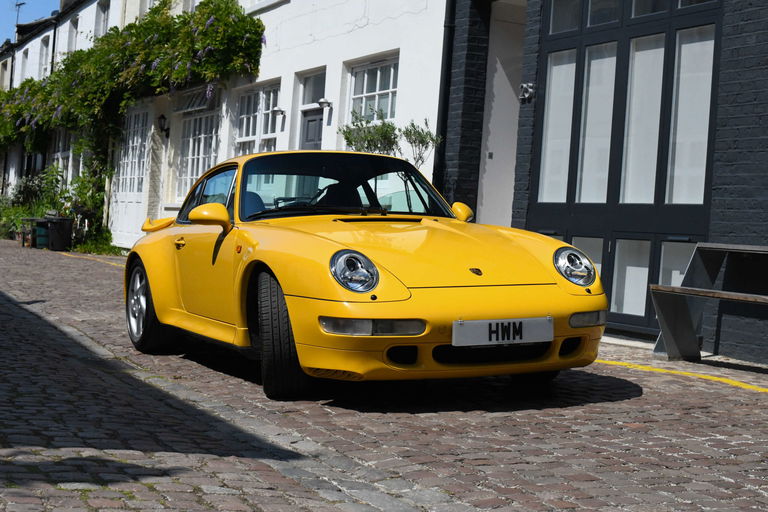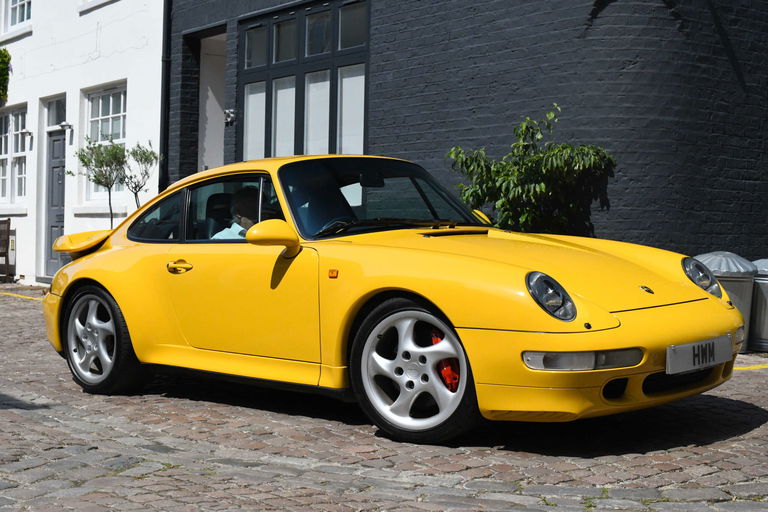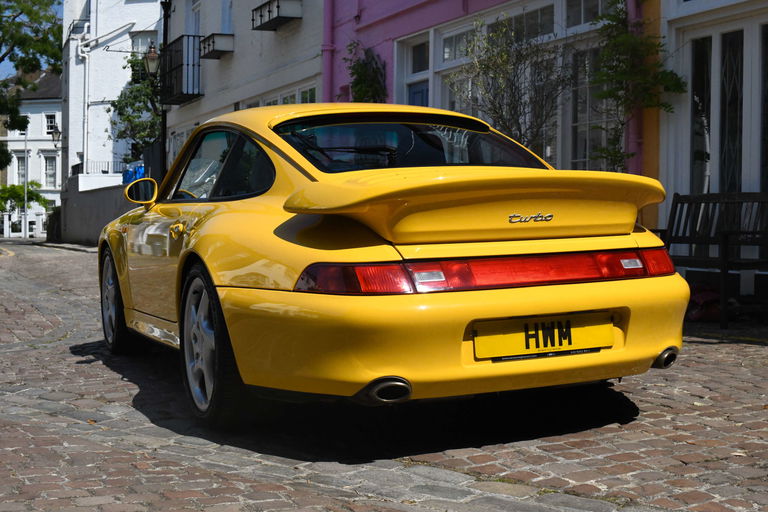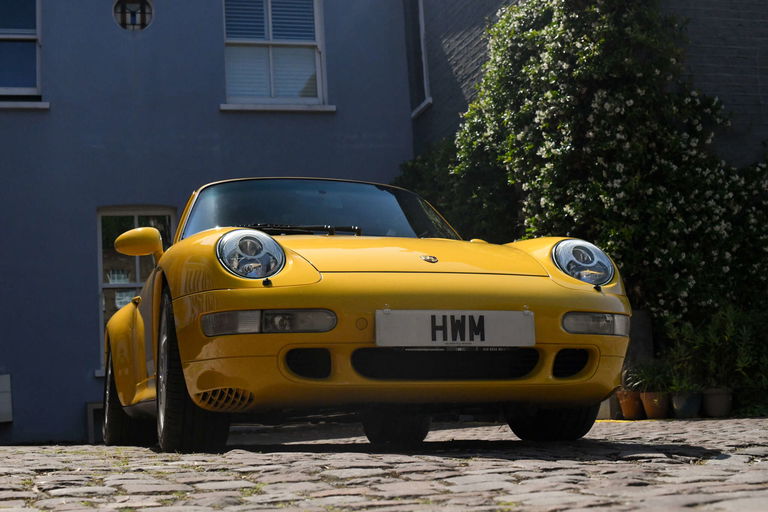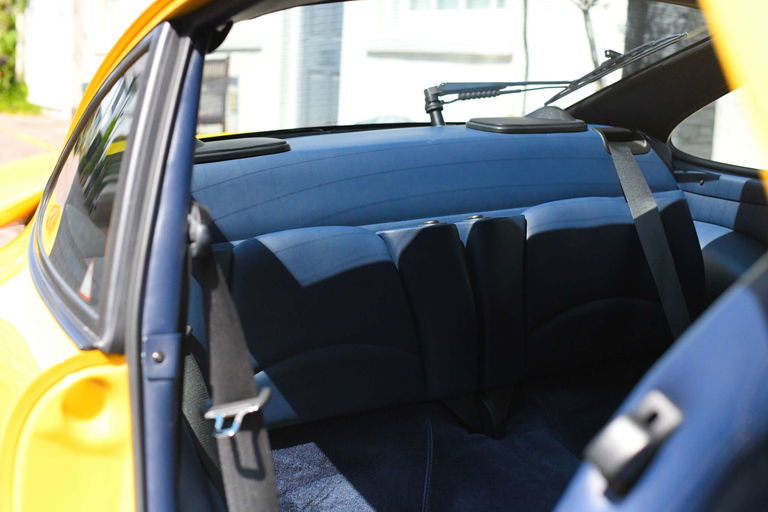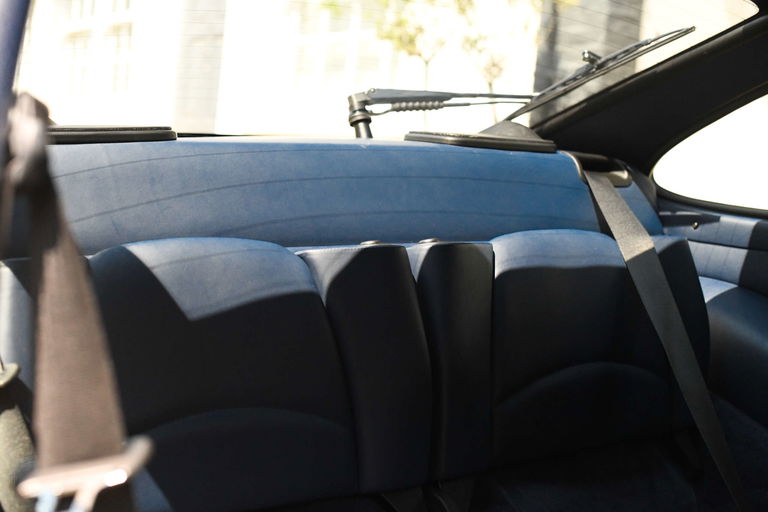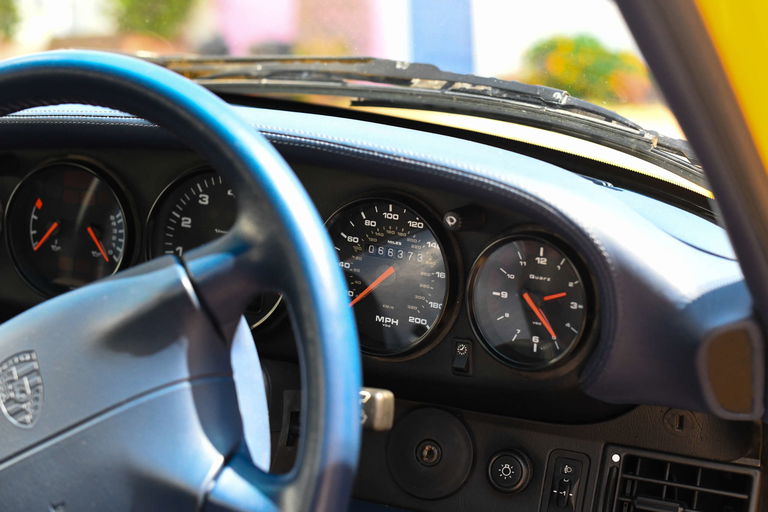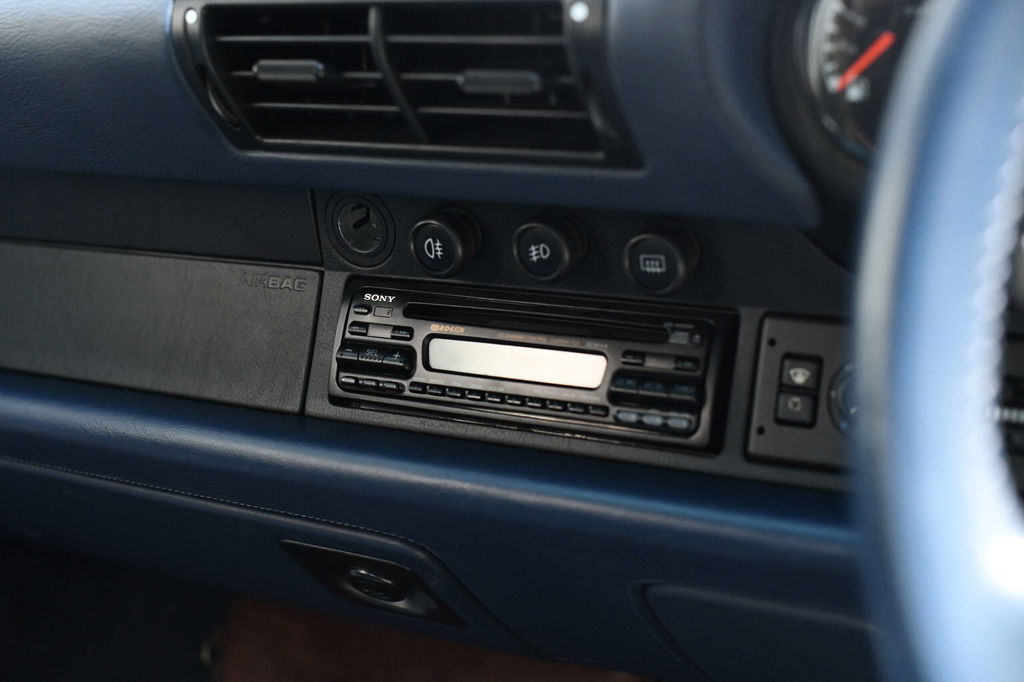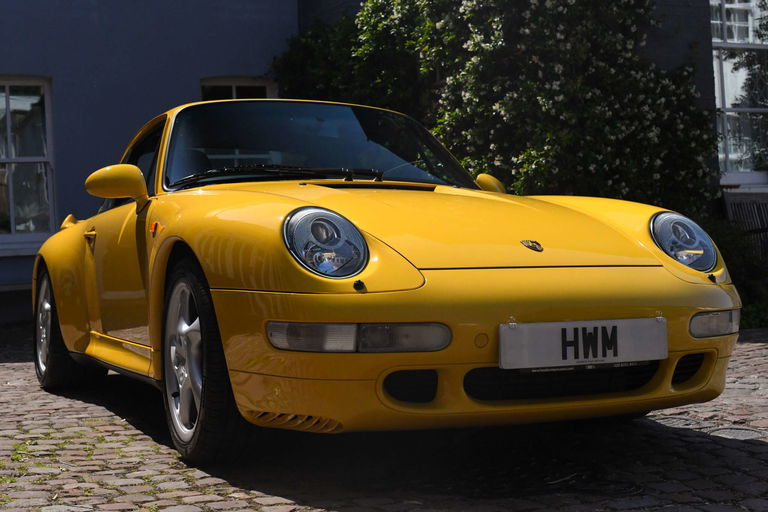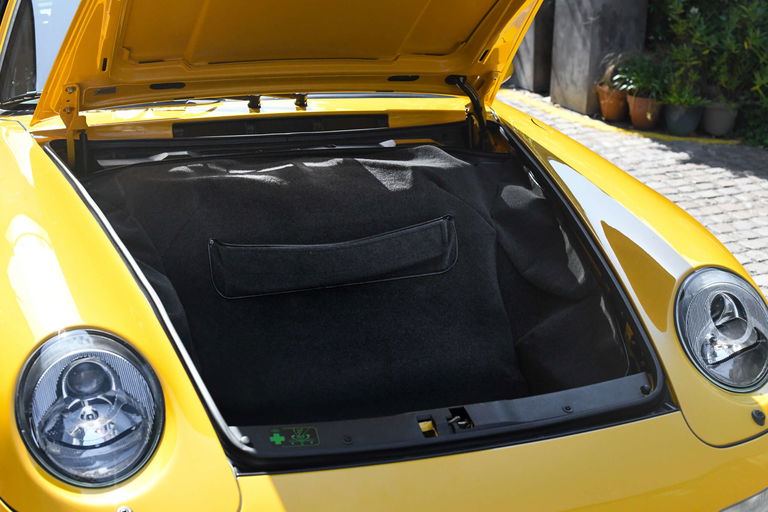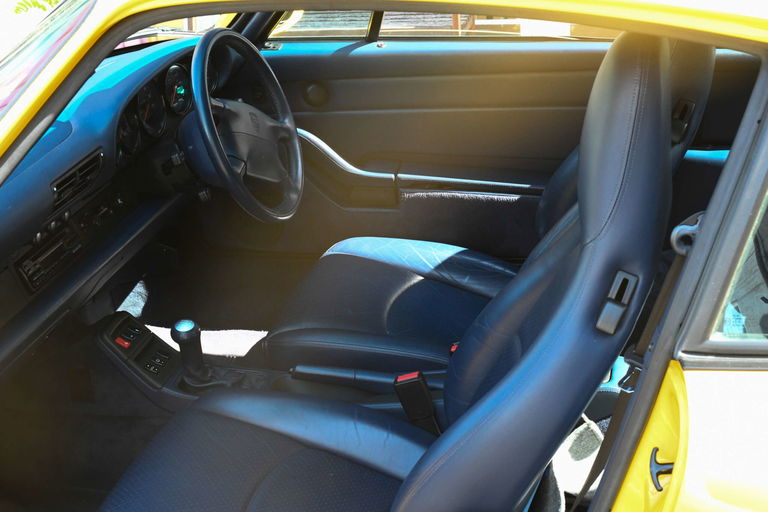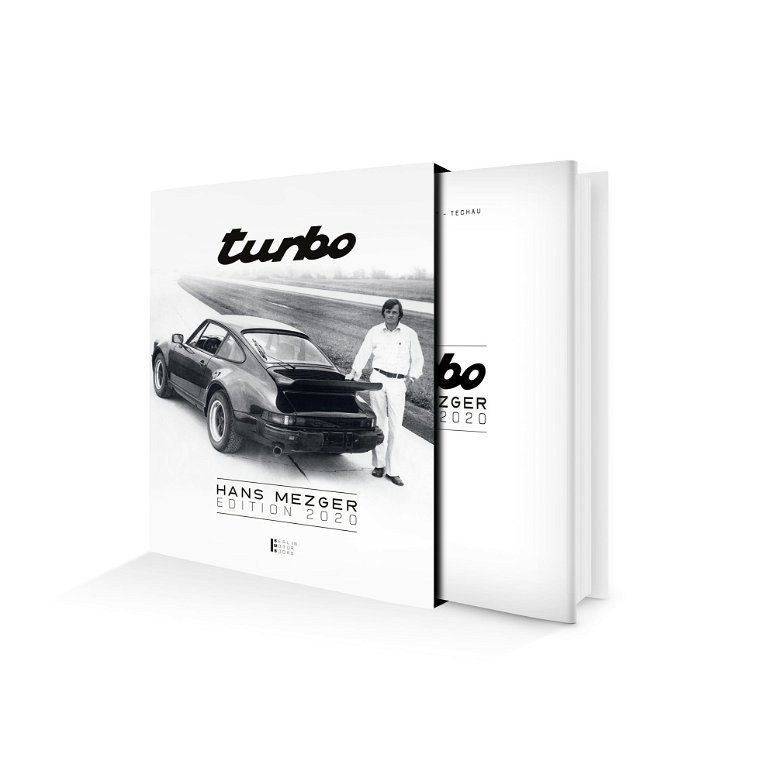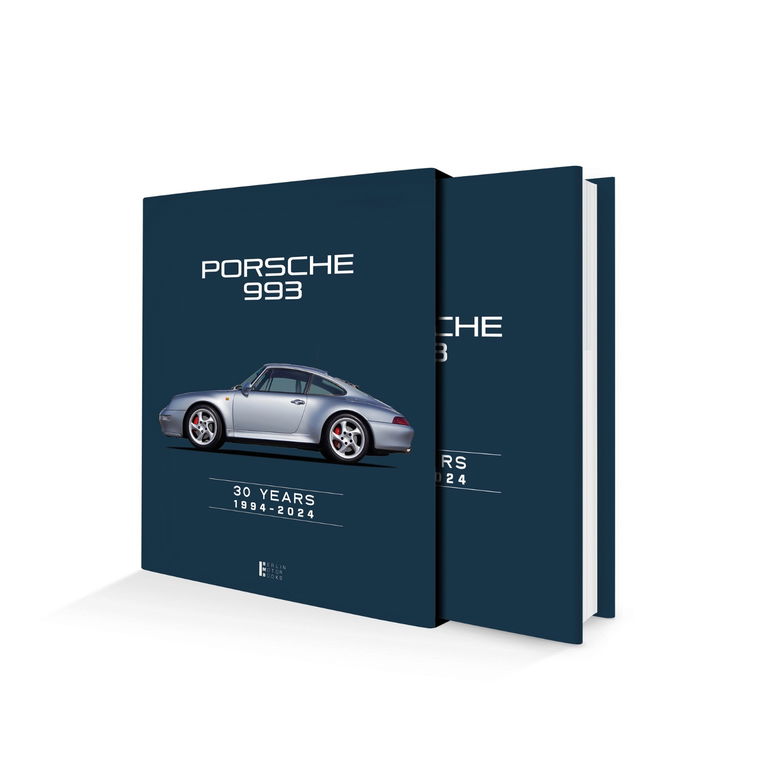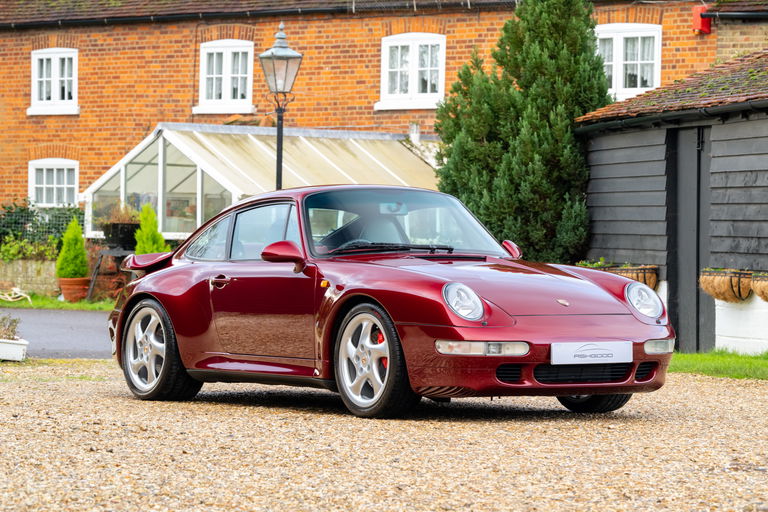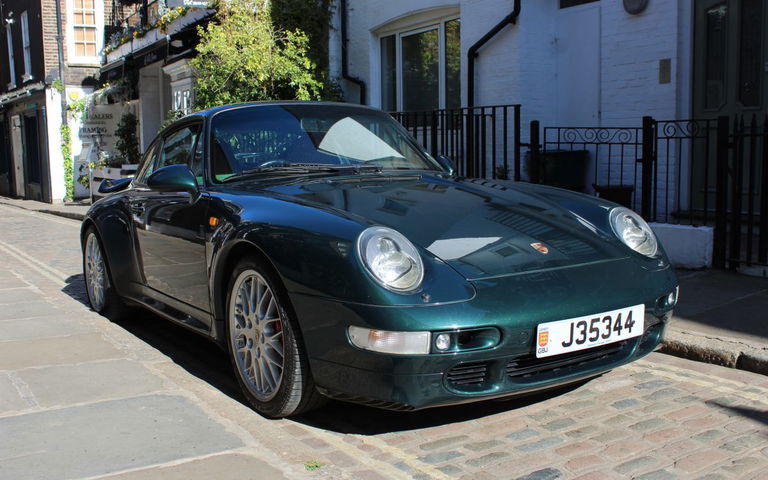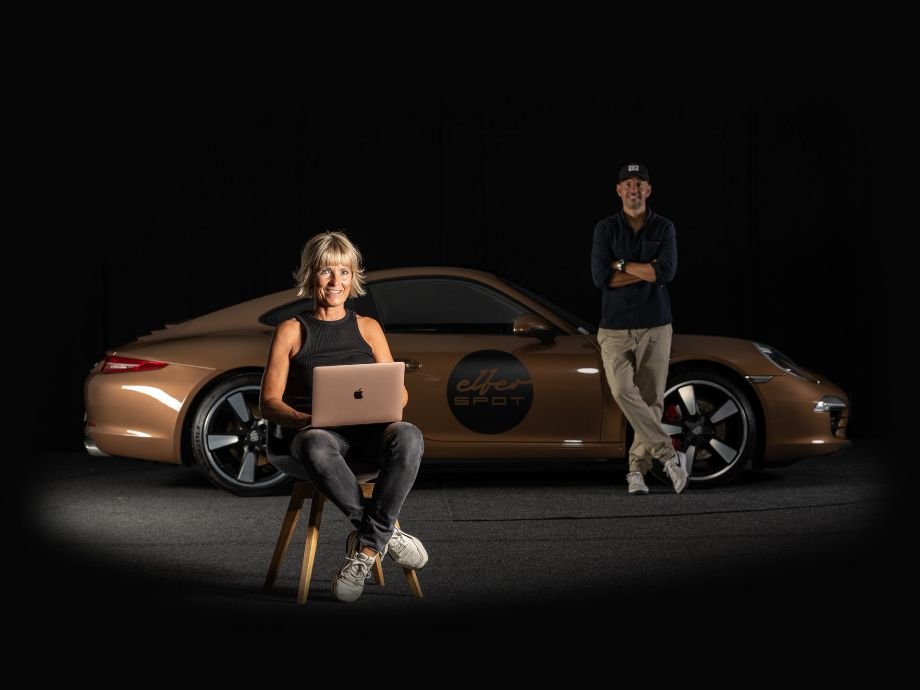The 993 model year is famously the last of the air-cooled 911s and was redesigned from the ground up, only borrowing 20% of its parts from the previous generation. Significant technical advances, including a new light-alloy subframe with a coil and wishbone suspension, an all new engine and newly standard 6 speed transmission, made significant progress in creating a more civilized car and a greatly improved driving experience. Designed by Tony Hatter, the 993 retained the classic 911 shape but featured updated exterior panels, significantly flared wheel arches, and a smoother front and rear bumper design. The aggressive stance of the wide-style body accommodated the new multi-link rear suspension which gave the car better stability. Newly improved handling made the car more planted and helped to reduce oversteer in cornering as well as improving ride quality and reducing interior noise. The acclaimed rear design sacrificed top speeds for better handling making it the perfect weekend partner to tackle the narrow, winding English country roads. Simply put, the new design and technical improvements meant the 993 generation Porsche hit the sweet spot between usability and fun.
The 993 turbo was introduced in 1995 and featured a new twin-turbocharged engine which brought the output up to 402 hp with the help of air-to- air intercoolers, electronic engine management, and redesigned cylinder heads. The 993 Turbo was the first to feature all wheel drive which was accommodated by wheel arches that were widened by approximately 6cm over the standard 993’s already enlarged arches. Most notably, the rear featured a fixed “whale tale” rear wing which housed the intercoolers and dramatically upped the 993 Turbo’s “cool” factor. The Turbo also featured larger brakes, new 18” alloy wheels, and was one of the first production cars in the world to feature the OBDII diagnostics system which would later feature as standard on the base 993 models. Thanks to a host of updates and firsts, the Turbo is an exciting drive but the all wheel drive system means the car still feels in control.
Continue reading




